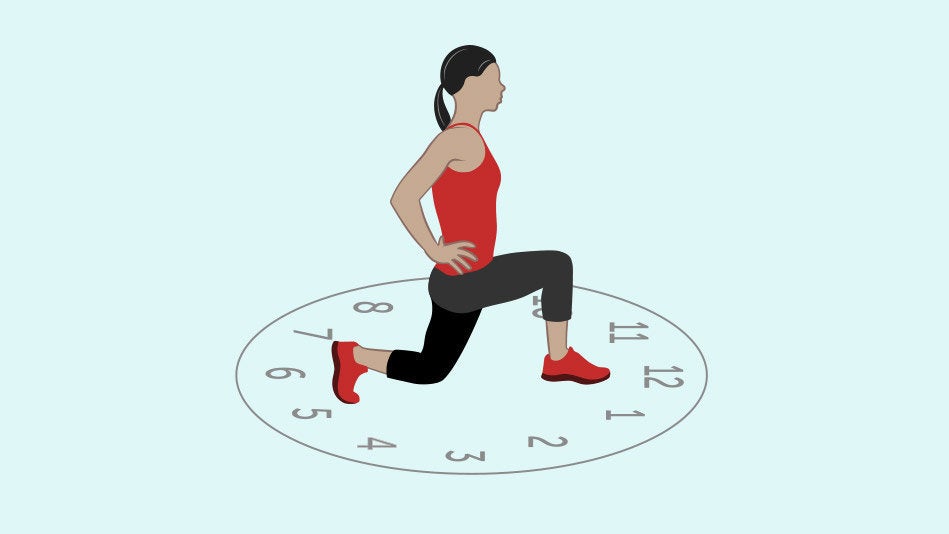
If you’re a man who spends a little more time on the couch than you want to admit, and you’re planning to start trying for a baby soon, here’s some advice: Exercise could significantly improve the quality of your sperm.
Specifically, moderate steady state cardio like jogging could improve your sperm’s speed, shape and volume, according to a new study published in the journal Reproduction.
How different exercises affected the quality of men’s sperm
A six-month study among 261 previously sedentary men in Iran found that those who were randomly assigned to start exercising on a treadmill improved the quality of their sperm in terms of volume, sperm count, motility and morphology (shape and size). All the men in the study were assigned to do either moderate intensity continuous training (running at moderate speed for 30 to 45 minutes, three to six days a week), high-intensity continuous exercise (running vigorously for one hour on the treadmill, three days a week), high intensity interval training (alternating minutes of sprints and walks for 20 to 30 minutes) or no exercise at all.
All exercising groups significantly decreased their weight, body fat percentage and waist circumference. But men who had been assigned to do moderate intensity continuous training managed to improve their sperm quality the most, and also enjoyed the exercise’s effects longest.
“Our results show that doing exercise can be a simple, cheap and effective strategy for improving sperm quality in sedentary men,” said lead researcher Behzad Hajizadeh Maleki in a press release.
The moderate intensity group improved their semen volume by more than eight percent. Their sperm motility was 12 percent higher, morphology improved 17 percent and they had 22 percent more sperm cells on average compared to the control group, which did no exercise.
But a week after exercise stopped, sperm count, shape and concentration dropped back to normal levels. Motility return to its previous rates after one month.
The research didn’t examine why moderate continuous exercise might be the best kind of exercise for improving sperm quality, but Maleki hypothesized that it exposed the testes to less stress and inflammation than the other exercises.
The truth about male infertility
Infertility is often thought of as a woman’s health issue, but male infertility causes 30 percent of all cases, according to the American Pregnancy Association. About 8 percent of sexually experienced men under 45 have seen a fertility doctor for help conceiving, reports the U.S. Centers for Disease Control and Prevention. Of those who sought medical help, 18 percent were diagnosed with male factor infertility. Fourteen percent had sperm problems, while six percent had a varicose vein in their testes that overheats sperm.
In addition to not being able to conceive, emerging research suggests that poor sperm quality may also include an increased risk of miscarriage. Exposure to smoking, illegal drug use, heavy drinking and environmental toxins can negatively affect sperm quality, as can medical conditions like diabetes, cystic fibrosis, infection or treatment with chemotherapy and radiation.
There are ways to treat male factor infertility, but they are often expensive and invasive. That’s why lifestyle changes like exercise are often the first step men should take to improve sperm quality, says Dr. Jesse Mills, director of the Men’s Clinic at the University of California, Los Angeles.
In a video published in July, Mills says men should keep their laptops off their laps and avoid saunas, hot tubs and hot yoga to prevent heating up their testicles. Men should also emphasize vegetables and fruits in their diet, and surprisingly, a little bit of coffee (just two or three cups a day) may also help improve motility.
Of course, not every sperm problem can be solved with exercise.
“It’s important to acknowledge that the reason some men can’t have children isn’t just based on their sperm count,” Maleki said. “Male infertility problems can be complex and changing lifestyles might not solve these cases easily.”
Couples under the age of 35 who have not been able to conceive after a year should seek medical treatment, while older couples should seek help after just six months. If the couple already has known pre-existing conditions that could affect fertility, such as inconsistent periods or recurrent miscarriage, they should consider seeking help right away.
Maleki now hopes to research whether exercise-improved sperm is actually better at fertilizing eggs.
